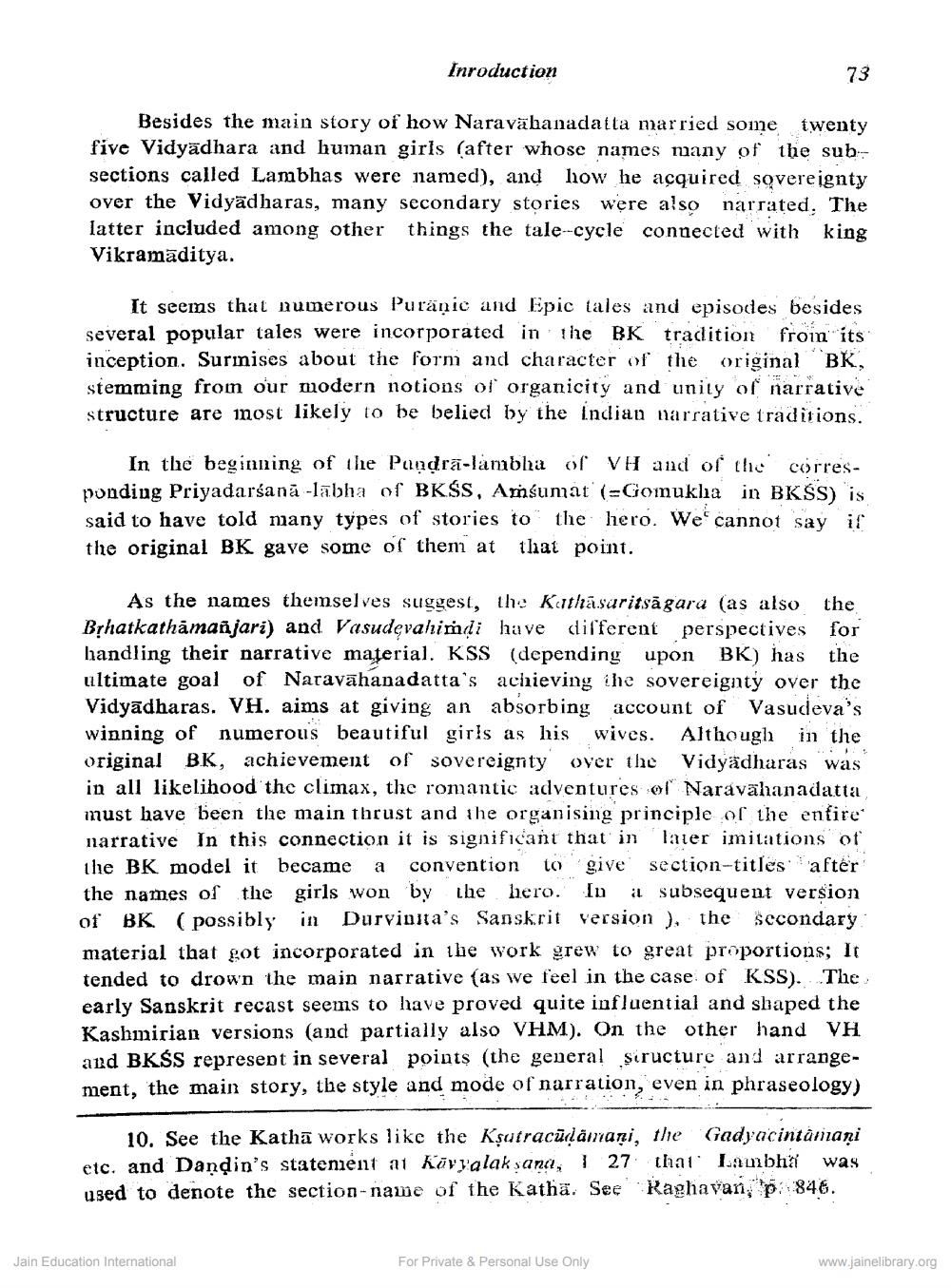________________
Inroduction
73
Besides the main story of how Naravāhanadatta married some twenty five Vidyadhara and human girls (after whose names many of the subsections called Lambhas were named), and how he acquired sovereignty over the Vidyadharas, many secondary stories were also narrated. The latter included among other things the tale--cycle connected with king Vikramaditya.
It seems that numerous Puräņic and Epic tales and episodes besides several popular tales were incorporated in the BK tradition from its inception. Surinises about the form and character of the original BK, stemming from our modern notions of organicity and unity of narrative structure are inost likely to be belied by the Indian narrative traditions.
In the beginning of the Puadrā-lambla of VH and of the corresponding Priyadarśanā -labha of BKSS, Amsumat (=Gomukla in BKSS) is said to have told many types of stories to the hero. We cannot say if the original BK gave some of them at that point.
As the names themselves suggest, the Kinthasaritsägara (as also the Brhatkathamañjari) and Vasudevahimdi have different perspectives for handling their narrative material. KSS (depending upon BK) has the ultimate goal of Naravāhanadatta's achieving ihe sovereignty over the Vidyadharas. VH. aims at giving an absorbing account of Vasudeva's winning of numerous beautiful girls as his wives. Although in the original BK, achievement of sovereignty over the Vidyadharas was in all likelihood the climax, the romantic adventures of Naravähanadatta must have been the main thrust and the organising principle of the entire narrative In this connection it is significant that in Tater imitations of the BK model it became a convention to give section-titles after the names of the girls won by the hero. In it subsequent version of BK (possibly in Durvinna's Sanskrit version ), the secondary material that got incorporated in the work grew to great proportions; It tended to drown the main narrative (as we feel in the case of KSS). The early Sanskrit recast seems to have proved quite influential and shaped the Kashmirian versions (and partially also VHM). On the other hand VH and BKSS represent in several points (the general structure and arrangement, the main story, the style and mode of narration, even in phraseology)
10. See the Kathā works like the Ksutracüdämani, the Gadyacintâniani etc. and Dandin's statenient at kövyalak sana, 127 that' Laubha was used to denote the section name of the Kathā. See Raghavan, p 846.
Jain Education International
For Private & Personal Use Only
www.jainelibrary.org




